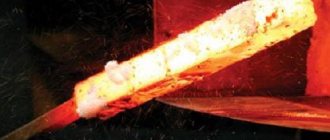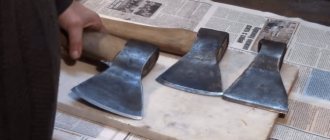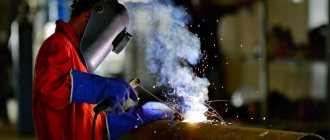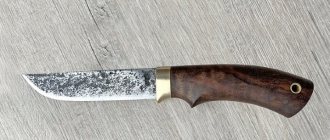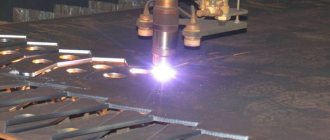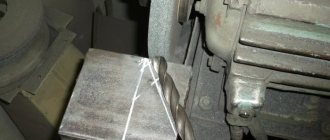The need to harden metal in a home environment is not uncommon. It can occur for a number of reasons, for example, if a tool or hardware does not meet the required strength to solve certain problems - it has a soft structure. Also, if the manufacturing process is disrupted, the parts may overheat and become too fragile. If the question arises of how to harden a bolt at home, there is only one answer - study the basic concepts of hardening metal and try to do it in practice.
To begin with, you should not resort to hardening those threaded elements whose strength needs to be increased. It would be more practical to take a defective part from a similar grade of metal and perform a thermal operation on it, and only after that, if the effect is positive, repeat the procedure completely. The article below will provide basic information on the topic of hardening steel at home.
Methodology
In order to carry out the work of hardening steel, you need to take into account how such a process is carried out correctly. Hardening is a process of increasing the hardness of the surface of an iron or alloy, which involves heating a sample to a high temperature and then cooling it. Despite the fact that at first glance the process in question is simple, different groups of metals differ in their unique structure and characteristics.
Heat treatment at home is justified in the following cases:
- If necessary, strengthen the material, for example, at the cutting edge. An example is the hardening of chisels and chisels.
- If it is necessary to increase the plasticity of an object. This is often necessary in the case of hot forging.
Professional hardening of steel is an expensive process. The cost of 1 kg of increasing surface hardness costs approximately 200 rubles. It is possible to organize hardening of steel at home only taking into account all the features of increasing surface hardness.
Process Features
Steel can be hardened taking into account the following points:
- Heating should occur evenly. Only in this case the structure of the material is homogeneous.
- The steel should be heated without the formation of black or blue spots, which indicates severe overheating of the surface.
- The sample cannot be heated to an extreme state, since changes in the structure will be irreversible.
- The bright red color of the metal indicates that the steel has been heated correctly.
- Cooling must also be carried out evenly, for which a water bath is used.
Temperature of the workpiece depending on the color when heated
It is recommended to take these points into account when considering how to harden at home.
Modes of hardening and tempering of steels
Equipment and features of the process
Special equipment is often used to heat the surface. This is due to the fact that heating steel to the melting point is quite difficult. The following equipment is often used at home:
- electric oven;
- blowtorch;
- thermal oven;
- a large fire that is surrounded to redirect the heat.
Mobile forge for heating parts
When choosing a heat source, you should take into account the fact that the part must be completely placed in the oven or fire on which the heating is carried out. It will also be correct to select equipment based on the type of metal that will be processed. The higher the strength of the structure, the more the alloy is heated to impart plasticity.
In cases where only part of the part needs to be hardened, jet hardening is used. It provides for a jet of cold water to hit only a certain part of the part.
A water bath or barrel or bucket is often used to cool steel. It is important to take into account the fact that in some cases gradual cooling is carried out, in others it is rapid and abrupt.
Hardening technology
Muffle furnace for heating parts:
To understand how to properly harden steel, you need to look at the process. It is as follows:
- The workpiece is heated to a temperature of 750…770 ⁰С. In this state, it stops being magnetic. Metallurgists call this mode austenitic. High plasticity occurs. The metal grains become large and the bond between them is destroyed.
- It takes time for the entire part to warm up. Steels have a peculiarity: only the surface layer can be heated, just a few fractions of a millimeter. Below this layer the temperature can be 30...50 ⁰C lower. If you do not heat the metal through its thickness, then only surface hardening will occur. When tested on a Rockwell device, the hardened layer is punctured; hardness is not guaranteed.
- The heated metal is hardened in water or oil. The choice of quenching medium is explained by the fact that when quenching in water, water vapor forms around the metal. It reduces the cooling rate several times. Steam can have a temperature of up to 200...250 ⁰С, so there is no real hardening. When hardening in an oil environment (its boiling point is 350...380 ⁰C), the cooling rate is several times higher. Experienced craftsmen do not simply lower the object into oil one time, but perform several successive liftings and lowerings up and down. This is achieved by the interaction of the metal with new portions of oil, the cooling rate increases.
- During hardening, large grains obtained by heating to austenite turn into small grains (the size decreases thousands of times). It is the sharp decrease in the grain structure that contributes to an increase in surface hardness.
- When hardening, internal stresses arise inside the metal. Sometimes you can observe how thin parts burst under light load. It is necessary to eliminate them by briefly heating to the tempering temperature.
- In practice, holidays are divided into several modes. The most common is low tempering, which occurs at a temperature of 200...220 ⁰С. At home, it can be done in the oven of a regular gas stove. It is heated to a given temperature, parts that need to be partially released are placed. Then the metal is allowed to cool along with the entire plate (about 1...2 hours).
- Parts with low tempering last several times longer than hardened ones, but without subsequent tempering.
Oil hardening:
Increased hardness over open fire
In everyday life, hardening is often carried out over an open fire. This method is only suitable for a one-time process of increasing surface hardness.
All work can be divided into several stages:
- First you need to make a fire;
- at the time of lighting the fire, two large containers are prepared that will correspond to the size of the part;
- In order for the fire to produce more heat, you need to provide a large amount of coals. they give a lot of heat for a long time;
- one container should contain water, the other should contain motor oil;
- special tools should be used to hold the hot part being processed. In the video you can often see blacksmith pliers, which are the most effective;
- After preparing the necessary tools, you should place the object in the very center of the flame. in this case, the part can be buried in the very depths of the coals, which will ensure heating of the metal to a fusible state;
- coals that are bright white are hotter than others. The metal smelting process must be closely monitored. the flame should be crimson, but not white. if the fire is white, then there is a possibility of overheating of the metal. in this case, performance deteriorates significantly and service life is reduced;
- the correct color, uniform over the entire surface, determines the uniform heating of the metal;
- if darkening to a blue color occurs, this indicates a strong softening of the metal, that is, it becomes excessively plastic. this should not be allowed, since the structure is significantly disrupted;
- when the metal is completely heated, it should be removed from the source of high temperature;
- after this, the hot metal should be placed in a container with oil with a frequency of 3 seconds;
- The final stage can be called immersing the part in water. In this case, the water is periodically shaken. This is due to the fact that the water quickly heats up around the product.
When performing work, care should be taken as hot oil can cause damage to the skin. In the video you can pay attention to what color the surface should be when the desired degree of plasticity is achieved. But to harden non-ferrous metals, it is often necessary to be exposed to temperatures in the range of 700 to 900 degrees Celsius. It is practically impossible to heat non-ferrous alloys over an open fire, since it is impossible to achieve such a temperature without special equipment. An example is the use of an electric furnace, which is capable of heating the surface up to 800 degrees Celsius.
How to make a chamber for hardening metal?
A homemade muffle furnace is a must-have in the household today. It allows you to heat treat the product without unnecessary steps.
To make a stove with your own hands, you will need fireproof clay, which is used to cover boilers. A chamber no more than 1 cm thick is created from this material.
And its dimensions must fit into the following parameters of length, height and width - 210 * 105 * 75 mm.
When fashioning a muffle furnace with your own hands, you need to have a mold made from cardboard in advance. It is better to soak it in paraffin so that it does not stick.
The clay is spread on the mold from the wrong side, because this way it will not shrink during drying. When the clay hardens, it will move away from the edges of the mold on its own.
The same refractory clay will serve as the material for making the oven door. Then the homemade muffle furnace in the form of two parts should dry in the open air.
Then it is completely dried in an oven at a temperature of one hundred degrees.
Then the door and chamber are fired, gradually increasing the temperature to 900 degrees. These parts should then gradually cool in the oven itself.
Then the door is attached to the oven, carefully using a file and sanding the surface with sandpaper.
You need to wind 18 meters of nichrome wire around the camera. Its thickness should be 0.75 mm. The first and last turns are twisted.
Read also: Steel 65g hardness hrc
To avoid the risk of a short circuit, the distances between the turns of the wire are smeared with clay. Another layer about 12 cm thick is spread on the dried layer of clay.
A homemade muffle furnace made by yourself is placed in a metal frame measuring 270*200*180 mm.
To make the case easy to assemble, it is better to make it with two removable covers, which are secured with screws.
A door is attached to the front lid on a hinge; it should open horizontally. It is necessary to install a ceramic part on this door using bolts and gaskets.
The remaining gaps are again filled with clay, and the edges of the wire are removed onto the back cover of the frame.
Then a connector and a standard cord with a plug are prepared. All holes between the heating elements and the frame must be filled with asbestos chips.
To install a thermocouple and be able to monitor the heating process, it is advisable to make two holes in the chamber.
The first is 1 cm in diameter, the second is 2 cm. Closable metal curtains need to be attached to these holes.
The homemade stove design weighs 10 kg and can heat up to 950 degrees within an hour.
Its presence facilitates the process of hardening a drill, file, matrix and many other metal products. How a homemade stove hardens metal equipment is shown in the video.
Although muffle equipment that hardens metal is not the only option. Heat treatment can be performed by chamber and flame equipment, electric furnace, thermal furnace, as well as bath furnaces.
In any case, making a hardening device yourself is more profitable than buying it. For example, the average price of a muffle furnace is 40 thousand.
An electric furnace is used to harden metal at a temperature of about 1300 degrees and the electric furnace costs much more.
Heat treatment of metal has been carried out for many centuries. It allows you to significantly improve the performance properties of the material and change some properties. Hardening is a type of heat treatment. Even before the advent of firearms, blades were strengthened by hardening the metal used during their manufacture. Today, at home, you can harden a bolt, axe, chisel, blade, wire and many other products. It is worth considering in more detail how you can harden metal at home, and what difficulties may arise.
